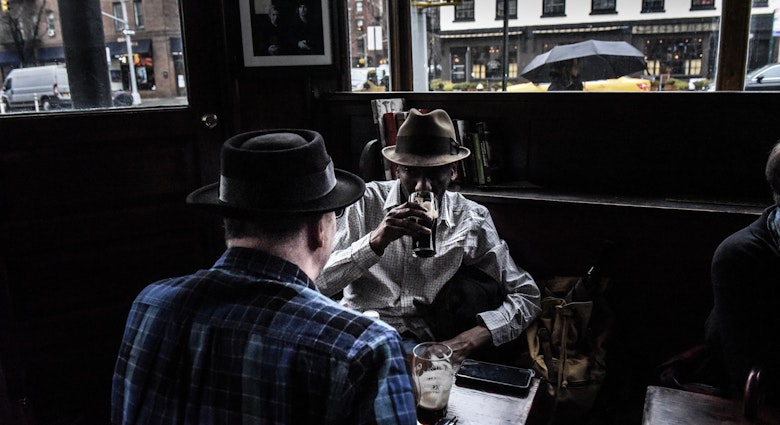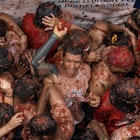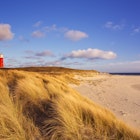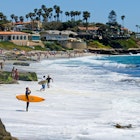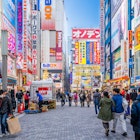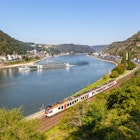Fittingly, for the birthplace of mathematical improbablist M. C. Escher, the Friesland capital of Leeuwarden has installed some thought-provoking and brain-shorting phantasmagoria for its year as the European Capital of Culture in 2018 – but wander the city with a curious eye and you’ll discover a deeper behind-the-curtain brilliance.
Just like any good magic show, the Capital of Culture award can allow a city to suspend belief, defer normality and ultimately redraw our opinions of a place. But when the lights come up, what will leave visitors spellbound in Leeuwarden?
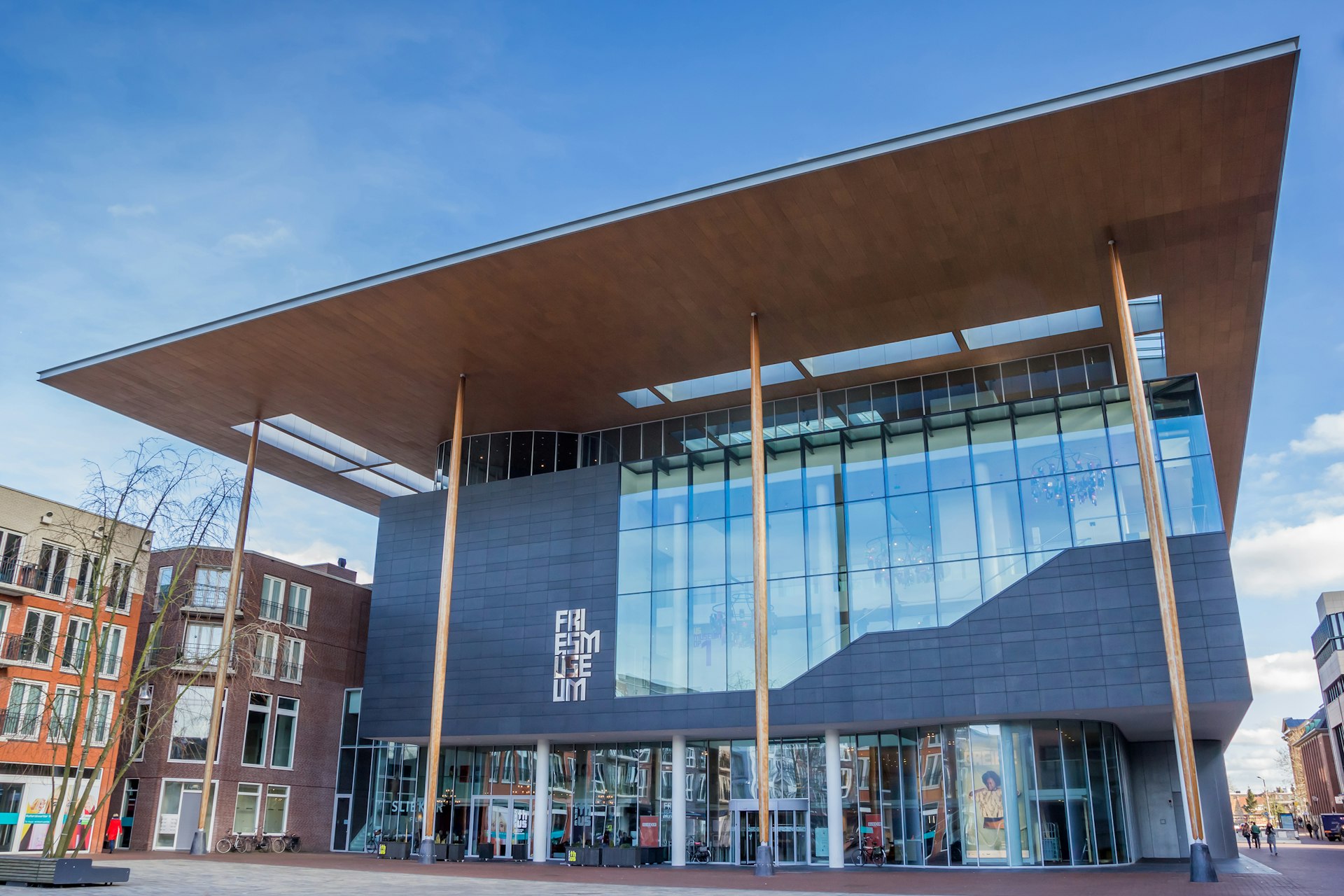
New tricks
When was the last time that you saw magic? Real magic. Not simple pick-a-card chicanery or vanishing coins, but true out of this cosmos conjuring. Well, Leeuwarden has put infinity on display at the Fries Museum. Yes, that infinity, the limitless bounds of human comprehension.
It’s an illusion, of course, nothing more than an immersive artwork called Luminal by Dutch artist Matthijs Munnik. But the installation uses sensory isolation techniques to fool the brain into believing that the soft red glow of its chamber goes on indefinitely. The piece encourages the curious to lean into the fuzz of forever, dangling their legs off the end of the black pontoon like fishing rods, but it always prevents the inquisitive from ever touching the edges and re-grounding in reality.
And that's not the only exhibition to play with visitors perceptions. The Giants of the Royal de Luxe – huge, moving puppets the size of houses – will take over the city for three days in August, roaming between the houses and sleeping in the squares, while the Sense of Place land art series will turn a field of wheat into a colossal grass sculpture. However, the city’s sorcery spans way beyond these one-off shows.
Architectural alchemy
Two hours north of Amsterdam by train, Leeuwarden is the last major city in The Netherlands before the cold froth of the North Sea. The provincial capital manages to condense the finery of the Dutch Golden Age into dioramic form: its cobbled streets are lined with individually decorated gabled buildings; the sails of shining skûtsje boats flap and whip in the wind; and there’s a collection of sandstone chapels that hide and peep from the city’s side streets.
But it’s the magic of an unfinished church, the Oldehove, that’s Leeuwarden’s most intriguing landmark. Started in 1529, builder Jacob van Aken had planned for the spire to rise to 120m and sever the clouds, overshadowing Groningen’s Martinitoren in a bout of neighbourly rivalry. However, the church began to sink during its construction, making it tilt to one side. It only ever topped out at a height of 39m. Efforts to straighten it only made it lean further and it now rests over the city square like an accidental M.C. Escher artwork. Climb the 183 steps for the best views of the city.
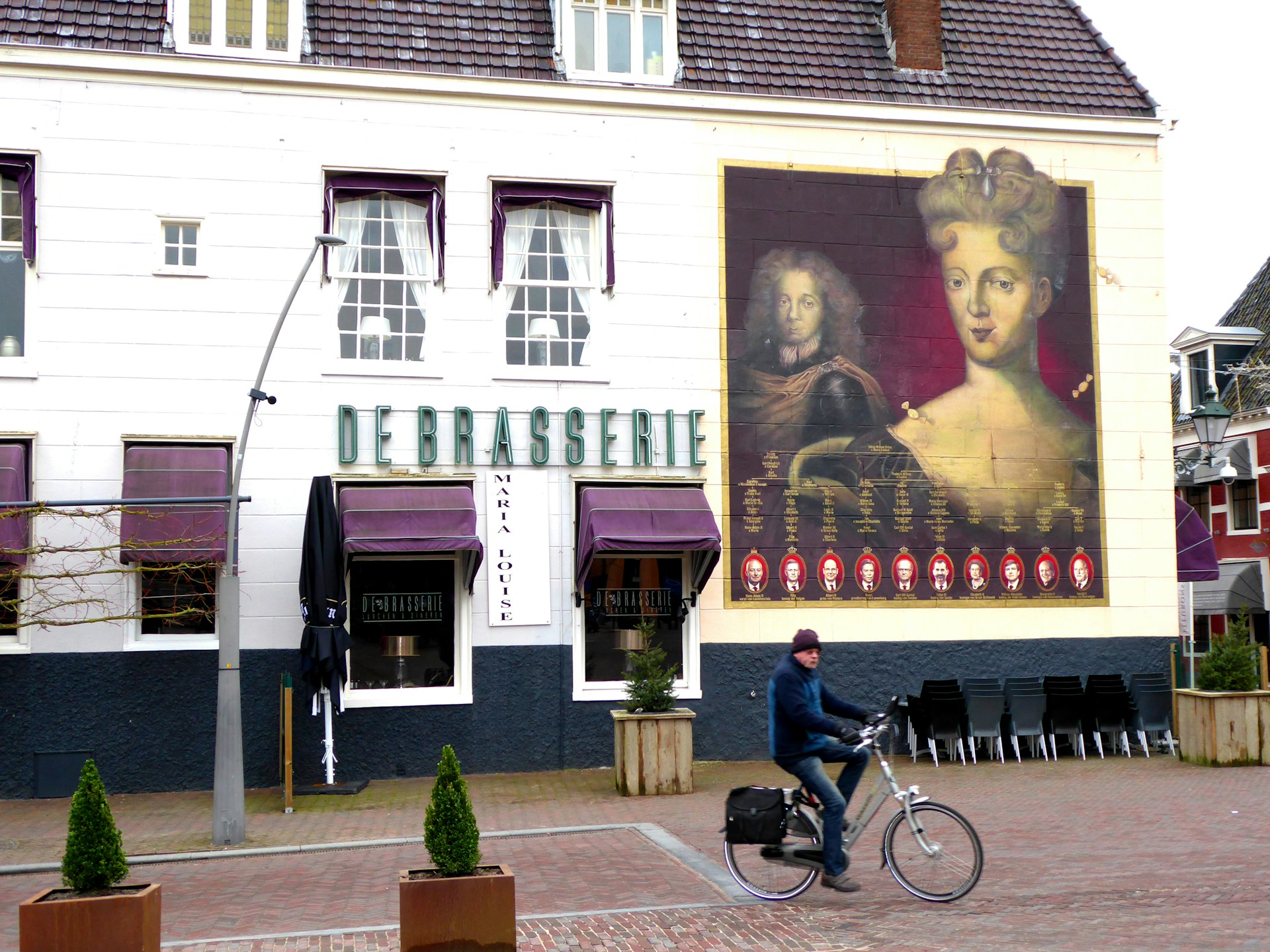
Mighty museums and art without a gallery
To see a deliberate Escher piece, head to Princessehof National Museum of Ceramics , the delightfully whimsical ceramics museum which took over the house where the graphic artist was born. A version of his Two Birds hangs on the exterior wall of the museum and is just one of a number of artistic nods to the city’s heritage.
Other street art worth seeking out includes the pixelated portrait of Rembrandt’s wife and Leeuwarden resident, Saskia van Uylenburgh, on the side of Historisch Centrum, and the fantastic mural of Marie Louise von Hessen Kassel, the Princess of Orange, that adorns De Brasserie Maria Louise. Leeuwarden was the Dutch royal residence between 1584 and 1747, and the Barque-style fresco allows viewers to trace Europe’s current monarchs of Europe back to Marie Louise. There are also a number of De Stijl-inspired artworks brightening up Bollemanssteeg.
With the largest collection of Chinese porcelain in the Netherlands and some wonderful Frisian pottery, the ceramics museum itself is something of a national treasure. It also invites contemporary artists to display their works. David Zink Yi’s striking ceramic squid — laid lifeless on the floor, pooled in black blood — and Céleste Boursier-Mougenot’s hypnotic clinamen (where ceramic bowls float in a pool, periodically clinking into one another) are among its recent coups.
Similarly, the excellent Fries Museum far exceeds the usual expectations for a provincial gallery. Focusing on Friesland, its curators often think laterally about their subjects, bringing to life displays like its engrossing Mata Hari exhibition, which uses personal letters, costumes and projections to chart the exotic dancer’s life from Leeuwarden to her execution as a spy in WWI. Erected in 2013, the museum was the parting gift of local architect Abe Bonnema, who left the city €18 million to build it after his death. Incidentally, Bonnema was also culpable for the nearby Achmea Tower, a sore thumb of a skyscraper, best used as a navigational marker.
A much more amiable addition to Leeuwarden’s cultural offering is the renovation of the foreboding former prison, Blokhuispoort. Ex-guards offer tours of the cells each Saturday at 2pm and 4pm, but its current inmates are more likely to be ateliers who have taken residence in Cell Block H selling art, cheese and handmade jewellery. There’s also an onsite hostel where guests bed down behind bars.
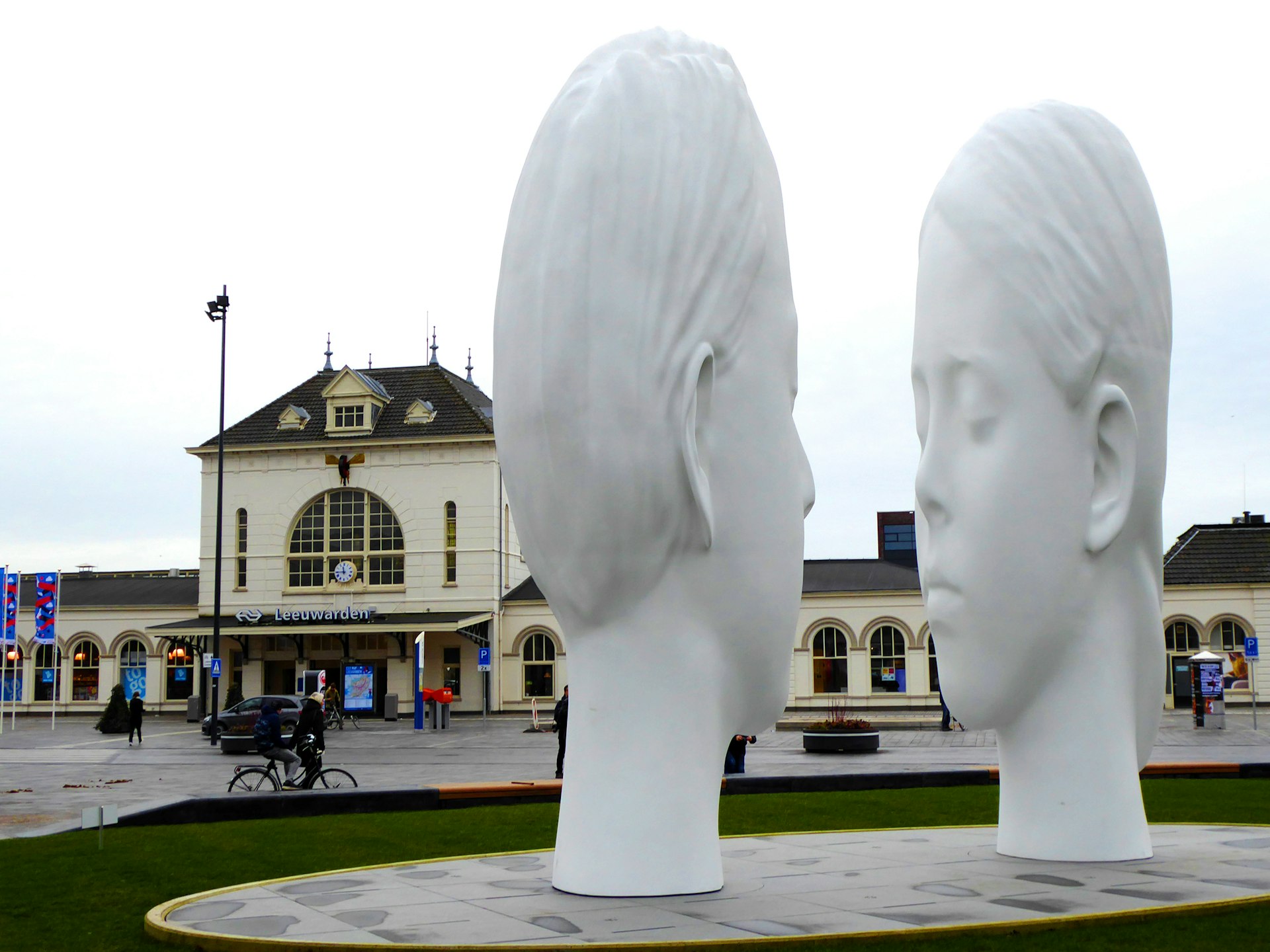
City secrets
Equally as playful is the head-turning Love installation by Spanish sculptor Jaume Plensa. Located right next to the train station, this fountain covers two peaceful faces in mist and is one of 11 water features created across Friesland in 2018 that link the cities of the Elfstedentocht ice skating tour. The 200km-long speed skating competition, which only takes place when the canals freeze over, last took place in 1997. The 11 fountains are thought to be a way of connecting the cities more permanently.
However, the 11 fountains – which include work by the American conceptual creative Mark Dion and the English installation artist Cornelia Parker – have been usurped somewhat by a 12th water feature: the penis fountain. Erected by disgruntled local artists who thought the original fountains should have been designed by Frisian sculptors, this touring piece is actually a 7.5m-high public toilet with more than 220 wooden penises attached. When the loo is flushed, the penises squirt water. It will tour the region throughout the year, spreading magic and mischief in equal measure.
Daniel Fahey travelled to Leeuwarden with support from Visit Holland. Lonely Planet contributors do not accept freebies in exchange for positive coverage.



